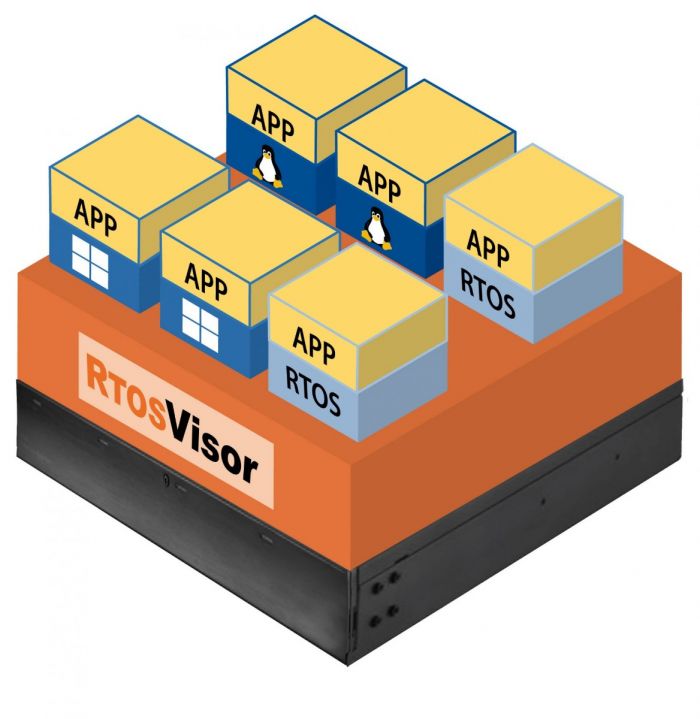We use cookies to make your experience better. To comply with the new e-Privacy directive, we need to ask for your consent to set the cookies. Learn more.
With acontis' industry-proven Real-time Hypervisor technology, multiple hard Real-time operating systems such as Real-time Linux and VxWorks can run natively. The solution incorporates KVM, which allows multiple standard operating systems like Windows and Linux (Ubuntu, Debian, Fedora, and many others) to operate simultaneously. KVM provides virtual hardware access and paravirtualization, which results in improved performance. KVM also supports hardware pass-through of PCI, USB, and VGA devices, ensuring the best possible performance.
Each guest OS is entirely independent and separate, which means that one OS can be restarted or shut down without affecting the others. This feature provides customers with the flexibility to manage their systems without any interruptions.
Sophisticated Web-based Configuration
Effortless Real-time Hypervisor Configuration
The acontis System Manager is a state-of-the-art software tool that simplifies the configuration of the Real-time Hypervisor, allowing for quick and easy creation and deployment of both simple and complex guest configurations. Each setup is meticulously fine-tuned to meet the specific requirements.
Key Features
User-Friendly Interface: Configure the Hypervisor remotely via a browser on your workstation. Alternatively, you can configure directly on the target computer.
Key Features
User-Friendly Interface: Configure the Hypervisor remotely via a browser on your workstation. Alternatively, you can configure directly on the target computer.
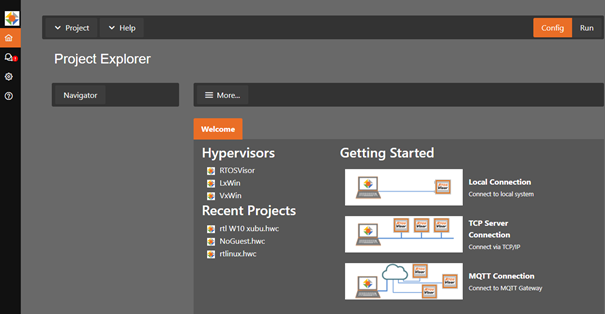
Guest Management: Seamlessly add and manage guests, ensuring a flexible and dynamic virtual environment.
System Partitioning: Allocate CPU cores and hardware resources to guests, optimizing performance and resource utilization.
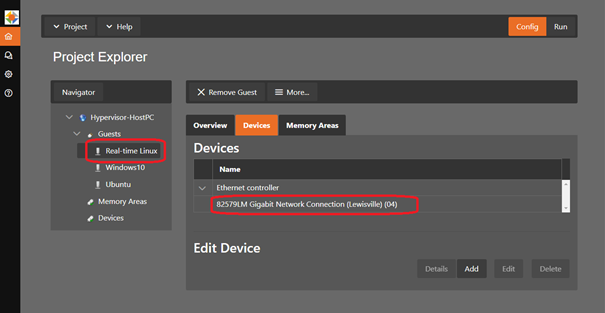
Guest Control: Initiate and terminate guest instances with ease, providing you with complete control over your Real-time Hypervisor environment.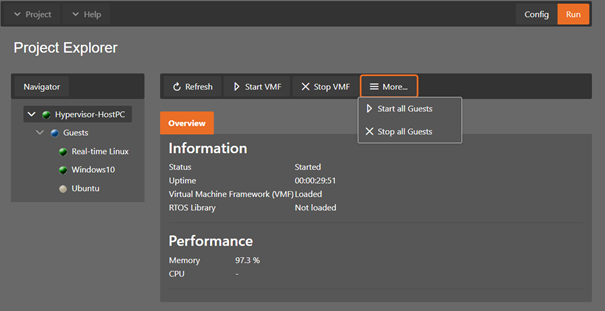
Elevate your Real-time Hypervisor experience with the acontis System Manager. Streamlined, intuitive, and tailored to your needs.
Architecture
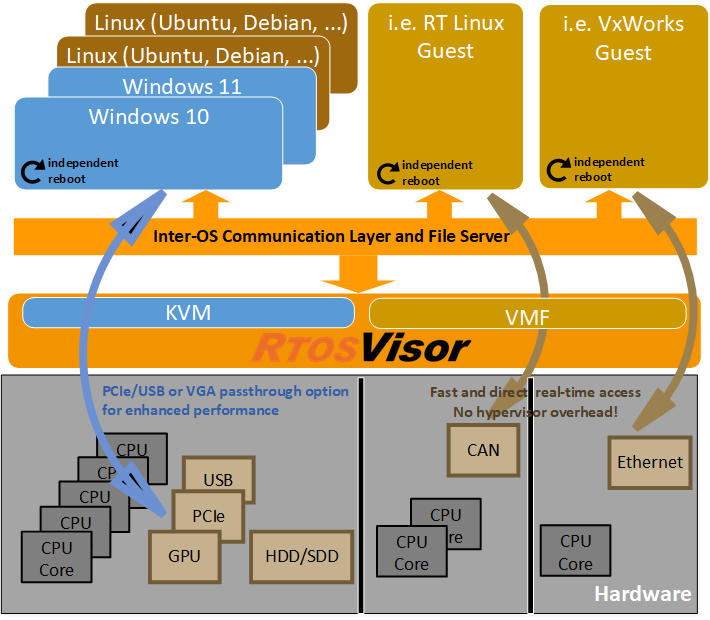
VMF (Virtual Machine Framework)
The RTOSVisor solution comes with a Virtual Machine Framework that allows any real-time operating system to run independently at native speed. This VMF introduces no overhead, and all RTOS drivers, operating systems, and applications can access hardware directly and quickly. The VMF technology has been developed over the past 15 years and has been an essential component in the previous Type 2 Real-time Hypervisor solutions, which has been successfully used by customers worldwide. acontis' new Type 1 Real-time Hypervisor, RTOSVisor, utilizes the same VMF technology without any modifications, which means existing customer applications can be used without any updates or changes.
KVM (Kernel-based Virtual Machine)
KVM is currently the most widely used vendor-independent Type 1 Hypervisor standard. It is frequently used in security-critical systems that require high availability, such as cloud solutions provided by Google (Google Cloud Platform), Amazon (AWS), and Oracle (Oracle Cloud). KVM can increase performance by passing through devices for USB, Ethernet, and graphics (GPU) to guests like Windows or Ubuntu, Debian, and other Linux distributions. Alternatively, KVM can paravirtualize devices like hard disks and Ethernet controllers, which can significantly improve performance and reduce the amount of necessary hardware without compromising throughput.
Technical Features
The RTOSVisor is the perfect synthesis of the widely used KVM Hypervisor technology and the industry-proven VMF for Real-time operating systems.
General
- Supports Multiple Operating Systems: Real-time Linux, VxWorks® RTOS, On Time RTOS-32, Standard Linux, Microsoft® Windows®, proprietary Roll-your-own, Bare metal, any unmodified OS
- RTOS containers, including applications that run on bare metal, with no Hypervisor overhead and direct hardware access
- Fully separated and independent guest operation
- User-defined guest startup sequence
- Utilize any number of CPU cores per single guest
- Independent reboot of all guests while others continue operation
- Virtual Networking between all guests
- Inter-OS Communication: Shared Memory, Events, Interlocked data access, Pipes, Message Queues, and Real-time sockets for high-speed application level communication
- Hypervisor-provided fileserver for all guests
KVM
Standard Windows 10 or Windows 11 and Linux operating systems (Ubuntu, Debian, and other distributions) run under the control of KVM. KVM provides many sophisticated features:
- Multiple Windows and standard Linux instances
- Windows/Linux containers with snapshot support to easily switch between different application situations without the need to install multiple OS instances. Snapshots create a view of a running virtual machine at a given time. Multiple snapshots can be saved and used to return to a previous state in the event of a problem
- Pass-through support: To increase performance, devices for USB, Ethernet, and graphics (GPU) can be completely passed through to the standard Windows or Linux guests
- Paravirtualization: Paravirtualized devices for the hard disk or the ethernet controller reduce the amount of necessary hardware without compromising throughput
- Graphics virtualization to provide 3D accelerated graphics to multiple guests
VMF
- Supports multiple Real-time Operating Systems (Real-time Linux, VxWorks, On Time RTOS-32, bare-metal, and others)
- Fast Real-time interrupt handling and short thread latencies
- Direct hardware access with no overhead
- Compatible with the existing acontis Type 2 Real-time Hypervisor solutions for Windows LxWin and VxWin (applications can be shared or cross-migrated between both solutions)
Just ask here



